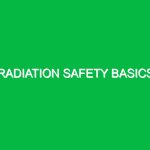Toxic gases pose significant risks to human health and the environment, making the safe handling of these substances paramount in various industries. The concept of “Safe handling of toxic gases” encompasses a range of practices, regulations, and technologies designed to minimize exposure and mitigate hazards associated with these dangerous materials. In this article, we will explore the importance of safe handling in the Health, Safety, and Environment (HSE) domain, identify associated risks, and provide actionable safety precautions and best practices.
Understanding Toxic Gases and Their Relevance in HSE
Toxic gases are substances that can cause harm to human health or the environment upon exposure. They may arise from industrial processes, chemical reactions, or even natural sources. Common examples include carbon monoxide, chlorine, ammonia, and hydrogen sulfide. The relevance of safe handling of toxic gases cannot be overstated; incidents involving these gases can lead to severe health consequences, environmental damage, and economic losses.
In the HSE domain, the primary goal is to protect workers, the community, and the environment from hazardous conditions. Effective management and safe handling practices are crucial in achieving this objective. For instance, in 2014, an explosion at a chemical plant in the United States resulted in the release of toxic gas, leading to injuries and significant environmental contamination. Such incidents highlight the need for stringent safety measures and protocols in the handling of toxic gases.
Identifying Hazards and Risks Associated with Toxic Gases
When discussing the safe handling of toxic gases, it is essential to identify the various hazards and risks involved. These can be broadly categorized into three groups: physical hazards, health hazards, and environmental hazards.
Physical Hazards
Physical hazards are related to the properties of toxic gases, such as flammability, reactivity, and volatility. For example, gases like acetylene and hydrogen are highly flammable and can create explosive atmospheres under certain conditions. Understanding these properties is vital for ensuring proper storage, handling, and transportation.
Health Hazards
Health hazards associated with toxic gases can range from acute effects, such as irritation of the respiratory system, to chronic effects, including long-term damage to organs or increased risk of cancer. For instance, exposure to carbon monoxide can lead to headaches, dizziness, and, in severe cases, death. It is important to recognize the symptoms of exposure and implement measures to limit contact.
Environmental Hazards
Environmental hazards occur when toxic gases are released into the atmosphere, potentially leading to pollution and ecological damage. An example of this can be seen in the case of industrial leaks, where gases contaminate air quality and harm local wildlife. Such incidents not only affect the environment but can also lead to regulatory penalties for the responsible party.
Safety Precautions and Best Practices for Handling Toxic Gases
Implementing safety precautions and best practices is crucial for the safe handling of toxic gases. Below are detailed recommendations to ensure safety in various settings.
1. Conduct Risk Assessments
Before handling toxic gases, it is essential to conduct thorough risk assessments. This involves identifying potential hazards, evaluating the likelihood of exposure, and determining the severity of potential consequences. A risk assessment should be regularly reviewed and updated as needed.
2. Use Proper Personal Protective Equipment (PPE)
Personal protective equipment is a vital component of safety when dealing with toxic gases. Workers must be equipped with suitable PPE, including respirators, gloves, goggles, and protective clothing. The specific type of PPE required will depend on the gases being handled and the level of exposure risk.
3. Ensure Adequate Ventilation
Proper ventilation is essential in areas where toxic gases are present. This helps to dilute gases and reduce the risk of inhalation. In confined spaces, mechanical ventilation systems should be employed to ensure a continuous supply of fresh air. Regular monitoring of air quality is also crucial to detect any potential buildup of toxic gases.
4. Implement Safe Storage Practices
Toxic gases must be stored in appropriate containers and locations. Ensure that storage areas are well-ventilated, away from sources of ignition, and equipped with appropriate signage. Containers should be clearly labeled with hazard warnings, and incompatible substances should be stored separately to prevent dangerous reactions.
5. Develop Emergency Response Plans
No matter how stringent the safety measures, accidents can occur. Therefore, it is vital to have an emergency response plan in place. This plan should outline procedures for evacuating personnel, containing leaks, and providing medical assistance. Regular drills should be conducted to ensure that everyone is familiar with these procedures.
6. Provide Training and Education
Training is a critical aspect of safe handling practices. Workers must be educated about the risks associated with toxic gases, the proper use of PPE, and emergency response procedures. Ongoing training programs help reinforce safety protocols and keep everyone informed about new regulations or best practices.
7. Monitor Exposure Levels
Continuous monitoring of toxic gas levels is essential in maintaining a safe working environment. Utilize appropriate detection equipment, such as gas monitors or detectors, to ensure that exposure levels remain below permissible limits. Regular maintenance and calibration of detection equipment are also necessary to ensure accurate readings.
Regulations and Standards Governing the Safe Handling of Toxic Gases
In many countries, regulations and standards exist to govern the safe handling of toxic gases. These regulations are designed to protect workers, the public, and the environment. Here are some of the key regulations that may apply:
1. Occupational Safety and Health Administration (OSHA)
In the United States, OSHA sets forth regulations regarding the handling of hazardous materials, including toxic gases. Employers are required to provide a safe working environment and implement safety protocols to minimize risks.
2. Environmental Protection Agency (EPA)
The EPA establishes regulations aimed at protecting the environment from hazardous substances. This includes guidelines for the release of toxic gases and the management of hazardous waste. Compliance with EPA regulations is critical for organizations involved in the production or use of toxic gases.
3. National Fire Protection Association (NFPA)
The NFPA provides guidelines for the safe handling and storage of flammable and toxic materials. Following NFPA codes helps prevent fire hazards associated with toxic gases.
4. International Organization for Standardization (ISO)
ISO standards, such as ISO 45001, focus on occupational health and safety management systems. Organizations can adopt these standards to enhance safety practices related to the handling of toxic gases.
Conclusion
Safe handling of toxic gases is a critical aspect of Health, Safety, and Environment (HSE) practices. By understanding the hazards associated with these gases, implementing safety precautions, and adhering to regulations, organizations can effectively minimize risks to workers, the community, and the environment. In an age where safety is paramount, investing in proper training, monitoring, and emergency response planning is not just a regulatory requirement; it is a moral obligation to ensure a safe working environment for all.
Ultimately, the goal is to foster a culture of safety and awareness, where individuals are empowered to prioritize their safety and that of their colleagues. By taking these steps, we can significantly reduce the dangers associated with toxic gases and contribute to a safer, healthier future.


